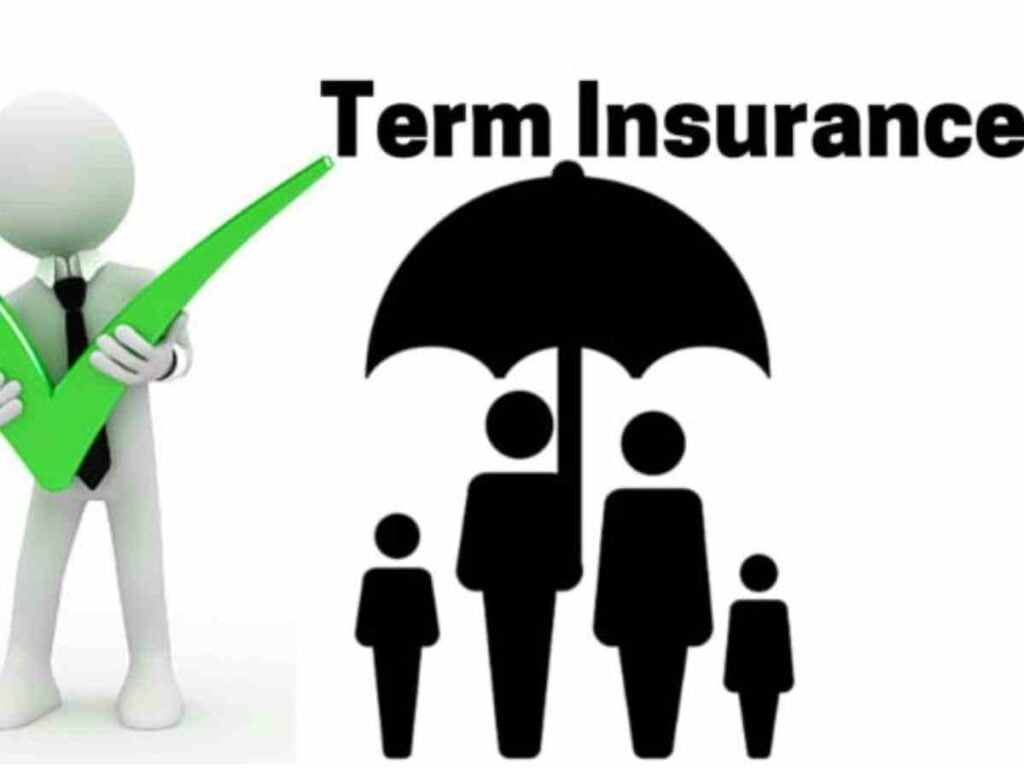Imagine you’re sitting at your kitchen table, sipping your morning coffee, when you notice an email from your HR department. It’s open enrollment season, and among the various benefits listed, one catches your eye—voluntary life insurance. You pause, wondering if this is something you should consider.
Flashback to a few years ago, when your friend Sarah faced an unexpected tragedy. Her husband passed away suddenly, leaving her and their two young children in a precarious financial situation. Thankfully, he had a robust life insurance policy that provided a safety net, allowing Sarah to focus on her family without the immediate stress of financial burdens.
As you think about Sarah’s story, you start to see the value in having additional life insurance coverage. But is voluntary life insurance the right choice for you? What exactly does it offer, and how does it work? In this article, we’ll explore the ins and outs of voluntary life insurance, helping you decide if it’s a worthwhile investment for your peace of mind and your family’s future security.
Understanding Voluntary Life Insurance

Voluntary Life Insurance is an optional life insurance coverage that you might be able to buy through your work. It’s also known as supplemental life insurance because it adds extra coverage to company-sponsored group life insurance plans, which tend to be quite low. The coverage amounts for voluntary life insurance are typically multiples of your salary.
Now, let’s see how it differs from employer-provided life insurance and individual life insurance policies:
- Voluntary vs Employer-Provided Life Insurance: Employer-provided life insurance, often referred to as basic life insurance, is a benefit paid for by the employer for the employee’s benefit. It’s usually offered free of cost to the employee up to a certain amount. On the other hand, voluntary life insurance is an added policy on top of this basic coverage. The employee pays for it, often at a discounted group rate.
- Voluntary vs Individual Life Insurance Policies: Voluntary life insurance is usually much cheaper than a private, individual life insurance policy because you are paying group rates. It’s often more accessible than an individual life insurance policy because it usually does not require a medical exam. However, the coverage limits for voluntary life insurance may be lower than you would find in an individual policy.
In summary, voluntary life insurance can be a beneficial option for those who need additional coverage beyond what their employer provides, or for those who may find individual life insurance policies too expensive or difficult to qualify for due to health concerns.
How Voluntary Life Insurance Works?
Voluntary life insurance is an optional benefit that employers offer to their employees, allowing them to purchase additional life insurance coverage beyond what is typically provided by the employer. This type of insurance works by deducting premiums directly from the employee’s paycheck, making it a convenient way to secure extra coverage. The premiums are often lower than those for individual policies because they are based on group rates.
Employees can usually enroll in voluntary life insurance when they start a new job or during the company’s open enrollment period. The coverage amounts are typically multiples of the employee’s salary, and the policy pays out a death benefit to the beneficiaries if the employee passes away while the policy is active. Some policies may also offer additional features, such as portability, which allows employees to keep their coverage if they leave the company, though they may need to pay the premiums directly to the insurance company.
Pros and Cons of Voluntary Life Insurance
Voluntary life insurance comes with several advantages and disadvantages that can help you decide if it’s the right choice for you.
Pros
- Supplemental Coverage: Voluntary life insurance can provide additional coverage on top of employer-provided basic life insurance, ensuring that your loved ones have more financial security.
- Affordability: Premiums for voluntary life insurance are often lower than individual policies because they are purchased through a group plan at your workplace, taking advantage of group rates.
- Convenient Enrollment: Enrollment is usually straightforward, with premiums automatically deducted from your paycheck, making it easy to manage.
- No Medical Exam: Many voluntary life insurance plans do not require a medical exam for enrollment, making it accessible for individuals with pre-existing conditions or health concerns.
- Portability: Some voluntary life insurance policies are portable, allowing you to keep the coverage if you change jobs, ensuring continuous protection without requalification.
Cons
- Limited Coverage Amounts: The coverage amounts may be limited compared to individual life insurance policies, potentially not meeting all your financial needs.
- Dependence on Employment: If the policy is not portable and you leave your job, you might lose your coverage, leaving you unprotected until you secure a new policy.
- Potential for Higher Costs: While premiums can be lower due to group rates, they might increase over time, especially as you age or if the employer’s group rates change.
- Less Customization: Voluntary life insurance plans may offer less flexibility and fewer customization options compared to individual life insurance policies, potentially not covering specific needs.
- May Overlap with Other Policies: If you already have an individual life insurance policy, voluntary life insurance might offer redundant coverage, leading to unnecessary additional costs.
By weighing these pros and cons, individuals can make a more informed decision about whether voluntary life insurance aligns with their financial goals and personal circumstances.
Types of Voluntary Life Insurance
Voluntary life insurance typically comes in two main types: voluntary term life insurance and voluntary whole life insurance. Each type has its unique features and benefits, catering to different needs and financial goals.
Voluntary Term Life Insurance
This type of insurance provides coverage for a specific period, such as 10, 20, or 30 years. It is often the most common type of voluntary life insurance offered by employers. The premiums are generally lower compared to whole life insurance, making it an affordable option for many employees. However, once the term ends, the coverage ceases unless it is renewed, often at a higher premium. This type of insurance is ideal for those looking for temporary coverage to protect their dependents during critical financial periods, such as while paying off a mortgage or funding a child’s education.
Voluntary Whole Life Insurance
Voluntary whole-life insurance, on the other hand, provides coverage for the insured’s entire lifetime, as long as the premiums are paid. This type of policy also includes a cash value component that grows over time, which can be borrowed against or withdrawn. The premiums are higher than those for term life insurance, but the policy offers lifelong protection and can serve as a financial asset. This type of insurance is suitable for individuals looking for permanent coverage and those interested in building cash value over time.
By understanding these two types of voluntary life insurance, employees can make informed decisions about which option best suits their financial needs and long-term goals.
Who Should Consider Voluntary Life Insurance?
Voluntary life insurance can be a valuable option for various individuals, depending on their specific needs and circumstances. Here are some groups who might consider it:
- Employees Seeking Additional Coverage: If your employer offers basic life insurance, voluntary life insurance can supplement this coverage, providing a higher death benefit for your beneficiaries.
- Individuals with Dependents: Those with spouses, children, or aging parents who rely on their income should consider voluntary life insurance to ensure their loved ones are financially protected in the event of their passing.
- People with Pre-existing Medical Conditions: Voluntary life insurance often has guaranteed issue policies, meaning you can get coverage without a medical exam, which is beneficial if you have health issues that might make traditional life insurance more expensive or difficult to obtain.
- Those Without Other Life Insurance: If you don’t have any other life insurance, voluntary life insurance can be an affordable way to get coverage through your employer.
- Employees Looking for Cost-effective Options: Voluntary life insurance is typically cheaper than individual policies because it is offered at group rates.
Remember, everyone’s situation is unique, so it’s important to carefully evaluate your personal circumstances and consult with a financial advisor or insurance professional when making these decisions.
Is It Worth Getting Voluntary Life Insurance?
Determining whether voluntary life insurance is worth it depends on your individual circumstances and financial goals. Voluntary life insurance is often more affordable than individual policies because it is based on group rates, making it an attractive option for those seeking cost-effective coverage. It provides additional protection beyond the basic life insurance offered by employers, which can be crucial if you have significant financial obligations like a mortgage or dependents who rely on your income.
For individuals with pre-existing medical conditions, voluntary life insurance can be particularly beneficial since it often does not require a medical exam, making it easier to qualify for coverage. Additionally, some policies offer portability, allowing you to maintain your coverage even if you leave your job, ensuring continuous protection for your beneficiaries. However, it’s important to consider that the coverage amounts may be lower than those available through individual policies, and the policy is often tied to your employment.
Factors to Consider Before Enrolling
Before enrolling in voluntary life insurance, it’s important to evaluate several key factors to ensure it aligns with your financial goals and needs:
- Coverage Amount: Assess how much coverage you need to support your dependents in the event of your death. Consider factors like outstanding debts, mortgages, education costs, and daily living expenses.
- Premium Costs: Compare the premiums of voluntary life insurance with other life insurance options. Ensure that the cost fits within your budget without compromising your financial stability.
- Policy Terms: Understand the terms of the policy, including the length of coverage for term life insurance or the cash value accumulation for whole life insurance. Make sure the policy terms meet your long-term financial planning needs.
- Portability: Check if the policy is portable, meaning you can maintain the coverage if you leave your current job. This is crucial if you anticipate changing jobs in the future.
- Additional Benefits and Riders: Look into any additional benefits or riders that the policy offers, such as accelerated death benefits, waiver of premium, or coverage for dependents. These can provide extra value and flexibility.
- Existing Coverage: Review any existing life insurance policies you have to determine if voluntary life insurance is necessary or if it can serve as a supplemental policy to enhance your overall coverage.
- Financial Stability of the Insurer: Ensure that the insurance company offering the policy is financially stable and has a good reputation. This can provide peace of mind that the insurer will be able to pay out claims when needed.
By carefully considering these factors, you can make an informed decision about whether voluntary life insurance is the right choice for you and your family.
Eligibility and Enrollment

Eligibility for voluntary life insurance is typically determined by the employer. Generally, full-time employees who work a minimum number of hours per week (often 30 hours or more) are eligible to enroll. Some employers may also extend eligibility to part-time employees or offer coverage through membership organizations and labor unions.
Enrollment Process
The enrollment process for voluntary life insurance usually occurs during specific periods:
- Initial Enrollment: Employees can enroll in voluntary life insurance when they first join a company. This is often part of the initial benefits package offered to new hires.
- Open Enrollment: Most companies have an annual open enrollment period during which employees can sign up for or make changes to their voluntary life insurance coverage.
- Qualifying Life Events: Certain life events, such as marriage, the birth of a child, or a significant change in employment status, may trigger a special enrollment period, allowing employees to enroll or adjust their coverage outside of the regular enrollment periods.
Medical Examinations
One of the advantages of voluntary life insurance is that it often does not require a medical exam. This makes it accessible to individuals with pre-existing medical conditions who might otherwise have difficulty qualifying for individual life insurance policies. However, the specifics can vary by employer and insurance provider, so it’s always a good idea to check the details of the policy offered by your employer.
How to Get Out of An Indexed Universal Life Insurance Policy?
By understanding these aspects, employees can better navigate the process of enrolling in voluntary life insurance and determine if it meets their needs.
FAQs
Q 1. What happens to my voluntary life insurance if I leave my job?
Ans. If you leave your job, you may be able to keep your voluntary life insurance coverage. However, you would be responsible for paying the premium directly to the insurance company, and your rate may change. Whether a life insurance policy you get through work is portable or not depends on the employer.
Q 2. Can I increase my voluntary life insurance coverage? If so, how often and by how much?
Ans. Yes, you can increase your voluntary life insurance coverage. The specifics of how often and by how much you can increase your coverage depend on the terms of your policy. You may also be required to provide evidence of insurability if you increase your level of coverage multiple times.
Q 3. What is the process for filing a claim on a voluntary life insurance policy?
Ans. To file a claim, you need to submit a certified copy of the deceased’s death certificate. You also submit a short claims form listing the policy number, details about the deceased’s death, your contact information and how you’d like to receive the insurance payout.
Q 4. Can I convert my voluntary term life insurance to a whole life policy?
Ans. Yes, most term life insurance policies offer “riders” that allow you to convert your term life policy to a whole life policy.
Q 5. Does voluntary life insurance cover accidental death and dismemberment?
Ans. Yes, many employers offer voluntary accidental death and dismemberment insurance, or voluntary AD&D insurance, often in addition to voluntary life insurance.
Q 6. What are the tax implications of voluntary life insurance?
Ans. The premiums for voluntary life insurance may be tax-deductible, and benefits paid out are generally tax-free.
Q 7. Can I borrow against my voluntary life insurance policy?
Ans. Yes, if your voluntary life insurance policy has a cash value component, you can borrow money from your life insurance.
Conclusion
In conclusion, voluntary life insurance can be a valuable addition to your financial plan, providing an extra layer of protection for your loved ones. It’s an affordable and convenient option that can supplement employer-provided life insurance or serve as an alternative for those who may not qualify for individual policies. However, like any financial decision, it’s important to carefully evaluate your personal circumstances, coverage needs, and the specifics of the policy offered. Consulting with a financial advisor or insurance professional can be beneficial in making an informed decision.

Join Shubham, a finance enthusiast with a mission to empower readers with the knowledge and tools to achieve financial freedom. Discover smart financial advice and unlock your financial potential.


